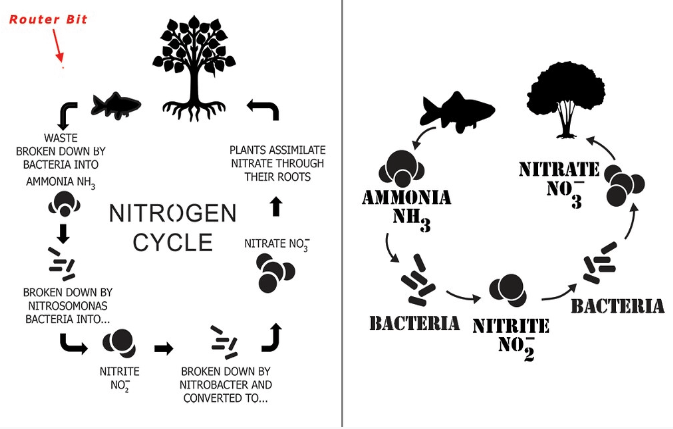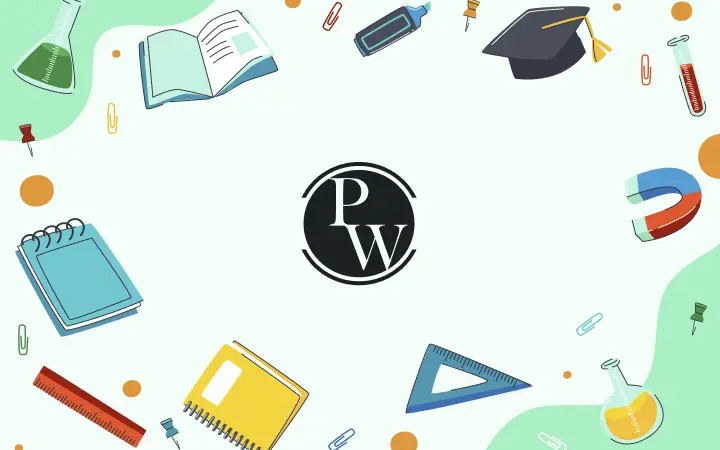
CBSE Class 9 Science Notes Chapter 14: The CBSE Class 9 Science Notes Chapter 14 is the environment's natural resources. Land, air, and water are these. The solid outermost layer of the crust of the earth is called the lithosphere. The water that covers the earth's surface is known as the hydrosphere.
Additionally, the air that blankets the globe and shields it from dangerous radiations is known as the atmosphere, according to the CBSE Class 9 Science Notes Chapter 14. Finally, the area including all biotic and abiotic components is known as the biosphere. Thus, the CBSE Class 9 Science Notes Chapter 14 lists the following categories of natural resources: air, soil, water, animals, minerals, forests, and soil. Get the free PDF right now.CBSE Class 9 Science Notes Chapter 14 Overview
There is just one planet where life exists: Earth. The land, water, and air are the resources of the planet. Additional resources consist of minerals, sunshine, wind, and fossil fuels. Living organisms within the ecosystem are referred to as biotic factors. The non-living, or abiotic, elements of the biosphere are soil, water, and air.CBSE Class 9 Science Notes Chapter 14 PDF
Here we have provided CBSE Class 9 Science Notes Chapter 14 for the ease of students so that they can just download the pdf and use it easily without the internet. These CBSE Class 9 Science Notes Chapter 14 will help students understand the chapter better.CBSE Class 9 Science Notes Chapter 14 PDF
CBSE Class 9 Science Notes Chapter 14
Natural Resources
Materials that are widely found on Earth and that are useful to living things are referred to as regular assets. The land, the water, and the air are these. The lithosphere is the robust outermost layer of the Earth's crust. The hydrosphere is the term used to describe the water that exists on Earth's surface or groundwater. The term "air" refers to the substance that envelops the entire planet like a blanket. The biosphere is the area of Earth that includes both biotic and abiotic components.The Breath of Life: Air
Gases such as nitrogen, oxygen, carbon dioxide, and water vapor make up air. Proteins and other natural atoms are made of nitrogen. Plants fix nitrogen, which is then transferred to organisms by their natural processes. When plants and animals breathe, they use oxygen in their bodies. Oxygen is also needed for the burning of non-renewable energy sources. Plants use carbon dioxide while they are engaged in photosynthesis. Carbonates that are broken down in ocean water are used by many marine animals to create their shells.Air and Air Pollution
An atmosphere is a layer of gases that surrounds a planet. Atmospheric air has 78% nitrogen, 21% oxygen, and 1% of other gases by volume.Role of atmosphere
Earth's average temperature is maintained by the atmosphere. It keeps the temperature from rising suddenly during the day and slows down the nighttime heat loss into space.Air pollution
When contaminants, organic molecules, or other hazardous chemicals are introduced into Earth's atmosphere, air pollution results. Reasons: Man-made sources include burning crackers, industry smoke, and fuel combustion. Volcanoes and forest fires are examples of natural sources. Consequences include acid rain, respiratory illnesses, and global warming. The atmosphere's role in regulating climate: The atmosphere shrouds Earth like a blanket. It stops both the gradual loss of heat from Earth to space and the daytime temperature spike brought on by the sun. The temperature on the moon varies from -190∘C to 110∘C due to the lack of atmosphere. Winds are the movement of air. In coastal areas, during the day, the air above the ground warms more quickly and rises. Air from the sea enters the area of low pressure that forms as the air rises. The passage of air from one location to another produces winds. During the day, the wind would be blowing from the sea to the land. Nighttime cooling of the air above the ground occurs because soil cools more quickly than water. Rain: Water bodies warm up during the day and release vapor into the atmosphere. As the vapor rises, it cools. Precipitation causes the vapor to condense into tiny water droplets, which then fall as rain. Rainfall patterns are determined by the dominant wind patterns. Air pollution is the result of particles of dust, smoke, chemicals, and pathogens contaminating the air. Acid rain is caused by specific nitrogen and sulfur oxides that are released during the burning of fossil fuels and dissolve in precipitation. The process of burning fossil fuels produces an increasing number of hydrocarbons. Reduced visibility occurs when there are high quantities of contaminants in the air. Regular exposure to air polluted by any of these substances increases the risk of allergies, cancer, and heart disease.Ozone layer
The thin layer of the Earth's atmosphere known as the ozone layer serves as a shield for the stratosphere and is responsible for absorbing the majority of the UV radiation from the Sun. High amounts of ozone (O3) compared to other atmospheric layers make up the ozone layer.Ozone layer depletion
Depletion of the ozone layer occurs when there is less ozone in the stratosphere, increasing the quantity of UV radiation that reaches the surface of the Earth.CFCs
Chlorofluorocarbon ( CFC ) is an organic compound that contains carbon, chlorine, and fluorine.Greenhouse effect
A natural phenomenon known as the "greenhouse effect" results from the Earth's atmosphere's greenhouse gases trapping solar radiation. Greenhouse gases include carbon dioxide (CO2), methane (CH4), ozone (O3), nitrous oxide (N2O), chlorofluorocarbons (CFCs), and water vapor (H2O). Certain gases protect you from the earth's heat explosion. The "inexperienced residence effect" describes how an increase in the amount of these gases in the atmosphere could raise average temperatures worldwide. One of the less experienced dwelling gases is CO2. An increase in the amount of CO2 in the atmosphere could lead to an increase in heat retention through environmental means and ultimately cause global warming.Water: A natural resource
Water's function in daily life: two-thirds of our bodies are made of water, which regulates body temperature. In addition, it is utilized for household, industrial, and agricultural reasons. Water distribution on Earth: The oceans contain 97% of the planet's surface water, with only 3% being fresh water.Water pollution
When contaminants are released into fresh, pure water bodies without receiving proper treatment, the resultant contamination of the water bodies occurs. The main causes of water pollution are- Urbanization.
- Industries
- Agriculture
- Religious and Social Practices
- Withdrawal of water and drying up of water bodies
Water cycle
- The water cycle, also known as the hydrologic cycle, is the continuous movement of water from the earth’s surface to the atmosphere and then back to the ground.
Water-cycle is the process by which water evaporates and as a result, falls on the land as water. The rain flows back to the sea with the help of rivers and such a cycle is called the water cycle. The steps included in the water cycle are:
- Evaporation
- Transpiration
- Respiration
- Precipitation

Transpiration and Evaporation
The biological process known as transpiration is how water from the stomata, or aerial portions of plants, is lost as water vapor. The process of turning liquid or solid into vapor is called evaporation.Soil
Soil and its formation
The topmost layer of the Earth's crust, known as soil, is created by mountains continually weathering. Parent material, time, climate, and organisms are the factors that lead to the development of soil.Soil composition
A variety of organic materials make up soil. Soil is composed of four basic elements: air, water, minerals, and inorganic stuff. Soils can be classified as clay, loam, silt, sand, etc.Mineral Riches In The Soil
Soil is another essential natural resource that keeps life alive. Humus, soil particles, and living things make up soil. There is also some water present in the soil in the form of air or droplets. The sun, water, wind, and living things make up the soil. The uneven contraction and expansion of rocks causes them to crack and crumble into smaller soil particles. Boulders become soil when frozen water trapped in rock fractures and smashes them. On the surface of rocks, lichens release chemicals that decompose the rock and transform it into soil. Hard rocks are broken down into soil particles by river water. Sand particles are carried by strong winds and worn rocks.Humus
The organic materials break down to create humus, which is the top layer of organic matter. These materials include dried leaves, twigs, and animal and plant remains. It has a significant impact on raising the soil's fertility.Soil pollution
Soil pollution is the term used to describe the addition of hazardous or damaging compounds to the soil that causes it to become unproductive. The primary causes of soil contamination include fertilizers, pesticides, industrial wastes, unintentional oil spills, acid rain, and other contaminants.Soil erosion
One type of soil degradation is soil erosion. The main factors that induce soil erosion include wind, rain, and flowing water. This lowers the potential for agricultural production and results in topsoil loss.Bio-geo-chemical cycle
The natural cycle or pathways in which the essential matter is circulated through the biotic and abiotic parts of an ecosystem.- Biogeochemical = Biological Chemical + Geological Process
Carbon
Carbon is a chemical element with the symbol C. It is a nonmetallic chemical element found in various forms:- In Elemental forms- Diamond, graphite
- In Combined form-carbon dioxide, carbonates
- Carbon-containing molecules are proteins, carbohydrates, fats, nucleic acids, vitamins
Biogeochemical Cycles
The biosphere's biotic and abiotic components exchange matter and energy continuously, which keeps the ecosystem both active and stable. These transfers occur over several cycles, which are described below.Carbon cycle
The term "Carbon Cycle" refers to the movement and conversion of carbon inside living organisms and their surroundings. Carbon exists inside the elemental forms of graphite and diamonds. Plants are where the carbon cycle first formed. Through the process of photosynthesis, plants utilize the carbon dioxide found in the environment to create glucose when there is light.The process by which carbon moves from the atmosphere to Earth is called the carbon cycle. The processes involved in the carbon cycle are:
- Photosynthesis
- Respiration
- Decomposition
- Combustion

Nitrogen Cycle
The recycling and reusing of nitrogen in various ways to satisfy the demands of diverse environmental activities is known as the nitrogen cycle.The process by which nitrogen passes from the atmosphere to organisms and soil and returns to the atmosphere is known as the nitrogen cycle. The processes included in the nitrogen cycle are:
- Nitrogen Fixation
- Nitrification
- Ammonification
- Denitrification

Oxygen Cycle
It is a biological mechanism that aids in preserving oxygen levels. Plants use a biological process called photosynthesis to turn light and energy into food. Three activities in particular use up oxygen from the environment: combustion, respiration, and the creation of nitrogen oxides. The most important process that returns oxygen to the environment is photosynthesis. Below is a diagrammatic illustration of it.
Three activities in particular use up oxygen from the environment: combustion, respiration, and the creation of nitrogen oxides. The most important process that returns oxygen to the environment is photosynthesis. Below is a diagrammatic illustration of it.

Benefits of CBSE Class 9 Science Notes Chapter 14
It is suggested that students practice and review science regularly. The subject matter specialists here have compiled crucial notes from various sources to aid in their practice. To ensure that students fully comprehend the answers to every question, the team has created comprehensive notes. A few advantages for students to review from the CBSE Class 9 Science Notes Chapter 14 are listed below:- There are all the topics covered in depth in this chapter.
- Students can identify their preparation-related strengths and shortcomings thanks to the variety of topics.
- Students can refer to the comprehensively offered notes before their exams.
CBSE Class 9 Science Notes Chapter 14 FAQs
Why do we fall ill notes?
What causes wind class 9 chapter 14?
What are the key points of natural resources Class 9?










